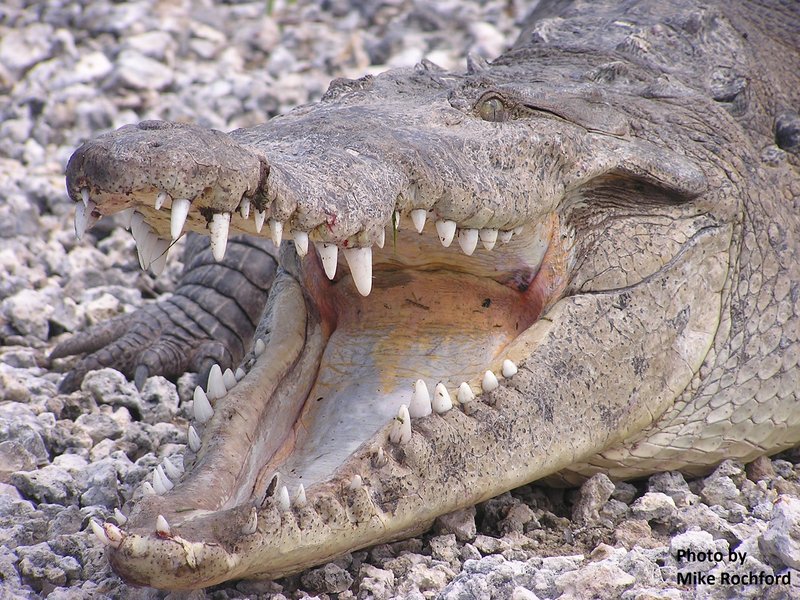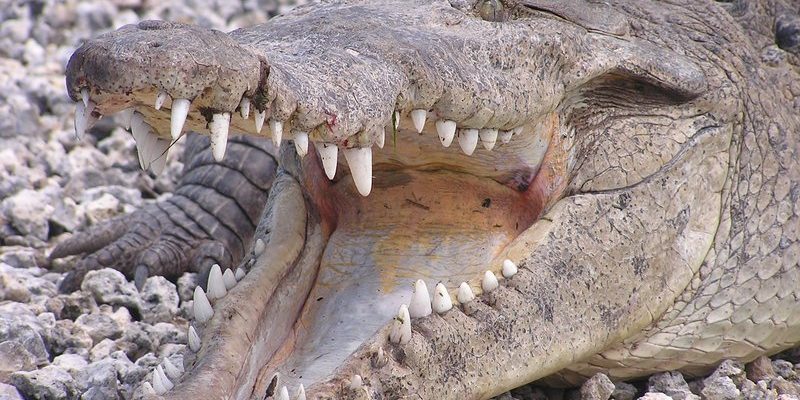
Think of it like this: spotting an American crocodile is like finding a rare book in a massive library. At first glance, it can be tricky, but with a little guidance, you’ll know exactly what you’re looking for. These creatures aren’t just fascinating because of their size; they play crucial roles in their ecosystems. Knowing how to recognize them can enhance your outdoor adventures and deepen your appreciation for wildlife.
In this article, we’ll break down the key features of the American crocodile, where they live, and how to safely observe them. With this information, you’ll be on your way to becoming a mini-expert in recognizing these incredible reptiles.
What Does an American Crocodile Look Like?
The first step to identifying an American crocodile is understanding its physical features. These reptiles are hard to miss once you know their distinct characteristics. Adult American crocodiles can grow to be quite large, often reaching lengths of 10 to 13 feet, with some even larger. Their bodies are long and streamlined, perfect for swimming.
One of the coolest things about American crocodiles is their coloration. They typically have a light olive brown or grayish skin that blends well with muddy waters. This provides them with a natural camouflage, helping them stay hidden while they hunt. You might even notice a pattern of darker spots along their back, giving them a mottled appearance. The underside of their bodies is usually lighter, which helps them blend in from the water’s surface.
Don’t forget about the snout! American crocodiles have a long, narrow, V-shaped snout which distinguishes them from their more robust cousin, the American alligator. If you’re looking at a crocodile, you’ll see that the fourth tooth on the lower jaw is visible when its mouth is closed—this tooth fits into a notch in the upper jaw. This feature can help you confidently identify it.
Where Can You Find American Crocodiles?
American crocodiles primarily reside in brackish and saltwater habitats, so understanding where to look is crucial. You’ll often find them in coastal regions, mangroves, and lagoons. If you’re near the southern tip of Florida or the coasts of Central America, there’s a good chance you might come across one.
These reptiles tend to bask in the sun during the day, so keep an eye on riverbanks, beaches, or logs that provide a nice perch for sunbathing. Just like you might sunbathe at the beach, crocodiles love soaking up the sun to digest their food and regulate their body temperature.
American crocodiles are also known to inhabit places like the Everglades in Florida, where wetlands provide them with ample hunting grounds. When exploring these areas, look for signs of crocodiles, like tracks in the mud near the water’s edge or even nests during the breeding season.
Behavioral Traits of American Crocodiles
Understanding the behavior of American crocodiles can greatly assist in identifying them. They are generally nocturnal, which means they’re most active at night. During the day, they tend to remain motionless, soaking up the warmth of the sun. This behavior can make them tricky to spot in the wild—if you see a large creature lying still, it might just be an American crocodile.
When it’s time to hunt, you’ll see them glide effortlessly through the water. Crocodiles have a unique way of stalking their prey. They often hide just below the surface, making them look like floating debris. If you’re lucky, you might catch a glimpse of their eyes peeking above the water.
Additionally, they are known for their powerful tails, which they use to propel themselves quickly when launching an attack. If you’re observing wildlife and suddenly see a large splash, it could very well be a crocodile catching its dinner.
Differences Between Alligators and Crocodiles
You might be wondering how to differentiate between an American crocodile and its close cousin, the American alligator. While they may look similar at a glance, there are key differences between the two.
First, consider the snout shape. As previously mentioned, crocodiles have a more V-shaped snout, while alligators possess a U-shaped snout. This fundamental difference can be a quick visual cue when trying to identify them.
Next, take a look at their habitats. While American crocodiles prefer saltwater habitats, alligators are more commonly found in freshwater environments. So, if you’re in a brackish area and see a long, slender snout peeking through the water, it’s likely a crocodile.
Lastly, consider the coloration. Crocodiles generally have a lighter, olive-toned skin, while alligators have a darker, more blackish appearance. These subtle yet important distinctions can help you identify the reptiles correctly.
Safety Tips for Observing American Crocodiles
If you find yourself in an area where American crocodiles reside, it’s crucial to know how to observe them safely. These reptiles are wild animals and should be treated with respect. Here are some tips to keep in mind:
- Maintain Distance: Always keep a safe distance from crocodiles. Use binoculars if you want a closer look.
- Stay Calm: If you encounter one, remain calm and avoid sudden movements. Crocodiles can be easily startled.
- Do Not Feed: Never attempt to feed crocodiles. This can lead to dangerous situations, and it’s harmful to their natural behavior.
- Observe from a Boat: If you’re out on water, keep a respectful distance from the shorelines where crocodiles may be basking.
Remember, these creatures are part of a delicate ecosystem. Observing them responsibly ensures that we can enjoy their beauty without disrupting their natural behavior.
Identifying an American crocodile in the wild can be an exhilarating experience. With a little knowledge about their physical features, behaviors, and habitats, you’re well on your way to spotting these fascinating reptiles. Just think of all the thrilling moments you’ll have when you recognize that sunbathing figure by the water’s edge.
So next time you’re out in crocodile territory, keep your eyes peeled, and embrace the adventure of wildlife watching. Just remember to stay safe and respect their space—after all, we’re just visitors in their world. Happy wildlife hunting!

